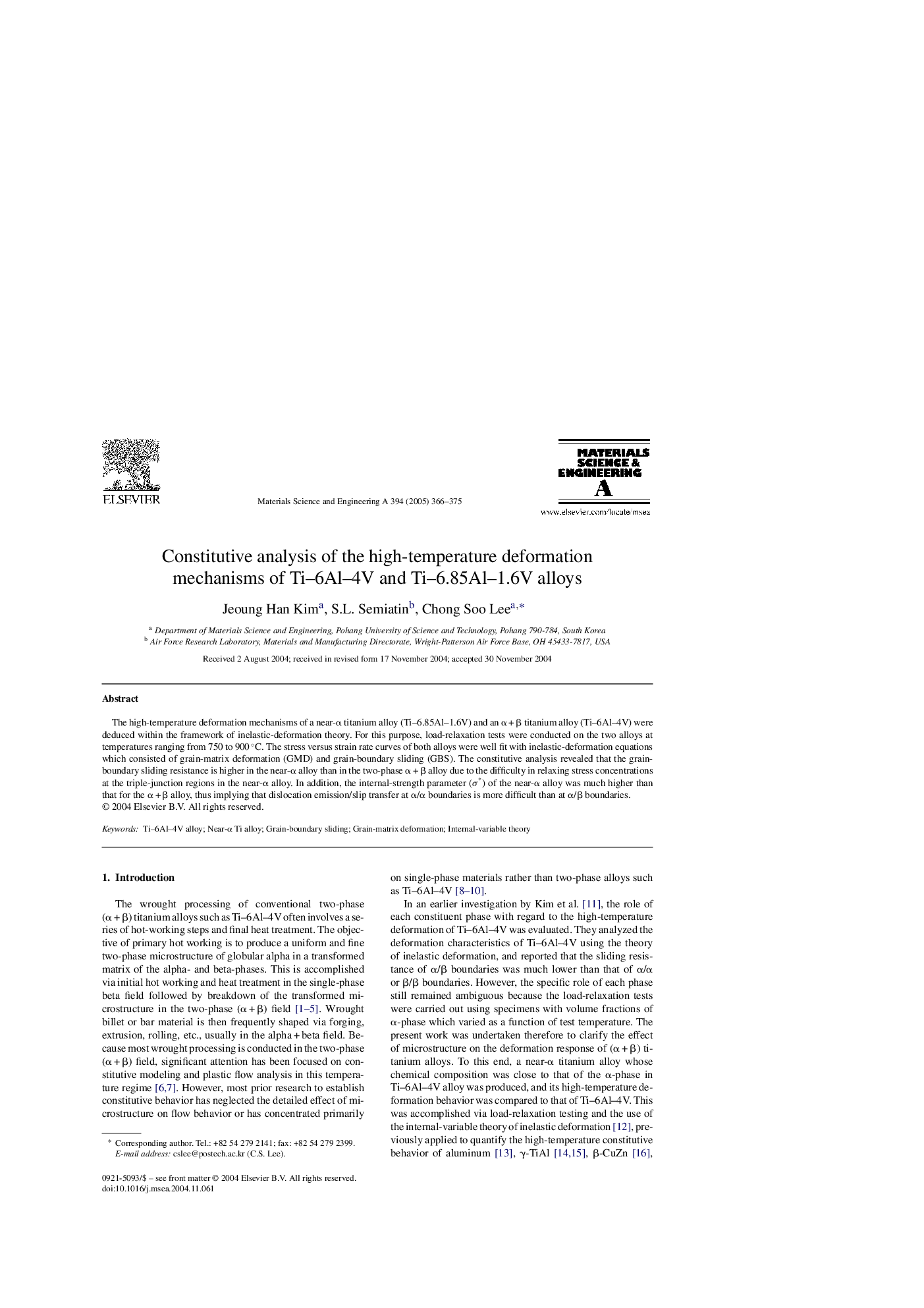| Article ID | Journal | Published Year | Pages | File Type |
|---|---|---|---|---|
| 9796464 | Materials Science and Engineering: A | 2005 | 10 Pages |
Abstract
The high-temperature deformation mechanisms of a near-α titanium alloy (Ti-6.85Al-1.6V) and an α + β titanium alloy (Ti-6Al-4V) were deduced within the framework of inelastic-deformation theory. For this purpose, load-relaxation tests were conducted on the two alloys at temperatures ranging from 750 to 900 °C. The stress versus strain rate curves of both alloys were well fit with inelastic-deformation equations which consisted of grain-matrix deformation (GMD) and grain-boundary sliding (GBS). The constitutive analysis revealed that the grain-boundary sliding resistance is higher in the near-α alloy than in the two-phase α + β alloy due to the difficulty in relaxing stress concentrations at the triple-junction regions in the near-α alloy. In addition, the internal-strength parameter (Ï*) of the near-α alloy was much higher than that for the α + β alloy, thus implying that dislocation emission/slip transfer at α/α boundaries is more difficult than at α/β boundaries.
Related Topics
Physical Sciences and Engineering
Materials Science
Materials Science (General)
Authors
Jeoung Han Kim, S.L. Semiatin, Chong Soo Lee,
